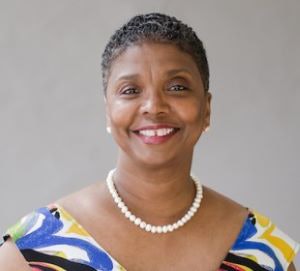Higher education leaders convened virtually Nov. 19 to discuss the role of historically Black colleges and universities (HBCUs) and accreditation during the COVID-19 pandemic.
Prairie View A&M University’s Minority Achievement, Creativity and High-Ability Center (MACH-III) hosted the webcast that was moderated by Dr. Jamal Watson, a professor at Trinity Washington University and contributor to Diverse: Issues In Higher Education.
“The good news is that every institution in the universe is being impacted by COVID,” said Dr. Belle S. Wheelan, president of Southern Association of Colleges and Schools Commission on Colleges. “The bad news is that every institution in the universe is being impacted by COVID.”
 Dr. Colette Pierce Burnette
Dr. Colette Pierce BurnetteShe began the webinar by discussing accreditation, saying it is a “process of continued improvement.”
To understand more about the accreditation process from an administrative perspective, Dr. Colette Pierce Burnette, president of Huston-Tillotson University (HT), recommended learning the standards and history of the institution.
Wheelan added that getting involved in on-campus efforts and reading the most recent self-study on the institution provide the opportunity to see and understand the current challenges.
“We suggest to institutions that they deal with accreditation every year, not just wait until the two years before the process begins,” she said. “Because that way, you can continually improve and you have fewer recommendations once the team comes in.”
As COVID-19 shifted courses online, institutions were forced to find other ways to assess student learning to meet accreditation requirements.
“One of the things that we have told all of our institutions is that because every institution is impacted by this, the peers that will come in to evaluate compliance understand because they are having to go through the same thing,” said Wheelan. “However, it does not relieve anybody of meeting the standards.”
The grading system was looked at, with many institutions offering one of two options: the choice between either a letter grade or pass/fail.
At institutions such as Central State University (CSU), faculty decided to continue using letter grades.
“[They] worked with the students by offering increased support, flexible deadlines in order to maintain academic integrity,” said Dr. Jack Thomas, president of CSU. “And to make sure that the students were continuing to pursue excellence rather than just simply giving them a pass fail.”
Remote learning also brought on another challenge: access.
 Dr. Jack Thomas
Dr. Jack ThomasAt Jarvis Christian College (JCC), for example, 78% of students did not have laptops or other technology while 73% of students lacked Wi-Fi. Some faculty members also did not have access to laptops at home, according to Dr. Lester C. Newman, president of JCC.
To meet the campus community’s technology needs and supply resources, the college used funding from the Coronavirus Aid, Relief, and Economic Security (CARES) Act. As part of the Higher Education Emergency Relief (HEER) Fund under the CARES Act, $1.4 billion in additional funding was set aside for minority-serving institutions, the United States Department of Education reported.
In addition to government funding, institutions launched their own fundraising efforts.
HT established the COVID-19 Support Fund, to financially assist students working to complete their degrees. The ongoing campaign has raised a little over $1 million, according to Burnette.
“That is another one of those empowering moments for a small, historically Black college in a city like Austin to be able to raise those type of funds,” she said. “That was really a telling tale of what we can do.”
Additionally, when Thomas began his presidency, he donated $50,000 of his salary toward scholarships. His donation was matched and with support from alumni, nearly $1 million has been received thus far.
Outside of financial support, schools have also provided other resources to students during this time such as mentoring and mental health services.
“Understanding that it is not an easy transition for them to leave campus, go home and still do what we expect them to do as relates to academics,” said Newman. “It is a little bit much for a lot of our students. So, we also have to meet them in terms of where they are and provide that support that they need as it relates to not only their physical health but their mental health as well.”
The safety students find in HBCUs was also lost amid campus shutdowns.
“Our campus is a safe harbor for our students,” said Newman. “And unfortunately, our students went back into communities that were not prepared to deal with a pandemic, went back to families that many of them had great challenges.”
Despite the challenges, there is optimism going forward into the upcoming year.
“I am very hopeful that we get beyond this pandemic and that we continue to provide a world class education for our students,” said Thomas. “And that we are not just surviving during this pandemic, that we are thriving. We also say that innovation is in our DNA. We want to thrive, move forward and use this as a learning process to get us to where we should be anyways and do some exciting, cutting edge kinds of things that would help us as a university.”
Sarah Wood can be reached at [email protected].





















